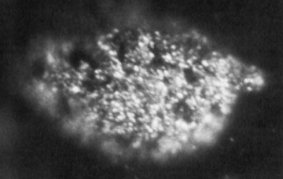Revision as of 15:32, 19 December 2020 by imported>Monkbot
[[Category:Template:Pagetype with short description]]
Berkelium, 97 Berkelium Pronunciation Appearance silvery Mass number [247] Berkelium in the periodic table
Atomic number (Z ) 97 Group n/a Period period 7 Block f-block Electron configuration [Rn ] 5f9 7s2 Electrons per shell 2, 8, 18, 32, 27, 8, 2 Physical properties Phase at STP solid Melting point beta: 1259 K (986 °C, 1807 °F) Boiling point beta: 2900 K (2627 °C, 4760 °F) Density (near r.t. ) alpha: 14.78 g/cm3 3 Heat of fusion 7.92 kJ/mol (calculated) Atomic properties Oxidation states +2, +3 [1] Electronegativity Pauling scale: 1.3 Ionization energies Atomic radius empirical: 170 pm Spectral lines of berkeliumOther properties Natural occurrence synthetic Crystal structure double hexagonal close-packed (dhcp) Thermal conductivity 10 W/(m·K) Magnetic ordering paramagnetic CAS Number 7440-40-6 History Naming after Berkeley, California , where it was discovered Discovery Lawrence Berkeley National Laboratory (1949) Main isotopes of berkelium
Category: Berkelium references
[[Category:Infobox templates|Template:Remove first word ]]
References These references will appear in the article, but this list appears only on this page.
↑ Kovács, Attila; Dau, Phuong D.; Marçalo, Joaquim; Gibson, John K. (2018). "Pentavalent Curium, Berkelium, and Californium in Nitrate Complexes: Extending Actinide Chemistry and Oxidation States". Inorg. Chem . American Chemical Society. 57 (15): 9453–9467. doi :10.1021/acs.inorgchem.8b01450 . PMID 30040397 . ↑ Milsted, J.; Friedman, A. M.; Stevens, C. M. (1965). "The alpha half-life of berkelium-247; a new long-lived isomer of berkelium-248". Nuclear Physics . 71 (2): 299. Bibcode :1965NucPh..71..299M . doi :10.1016/0029-5582(65)90719-4 . Lua error: Internal error: The interpreter has terminated with signal "24".


